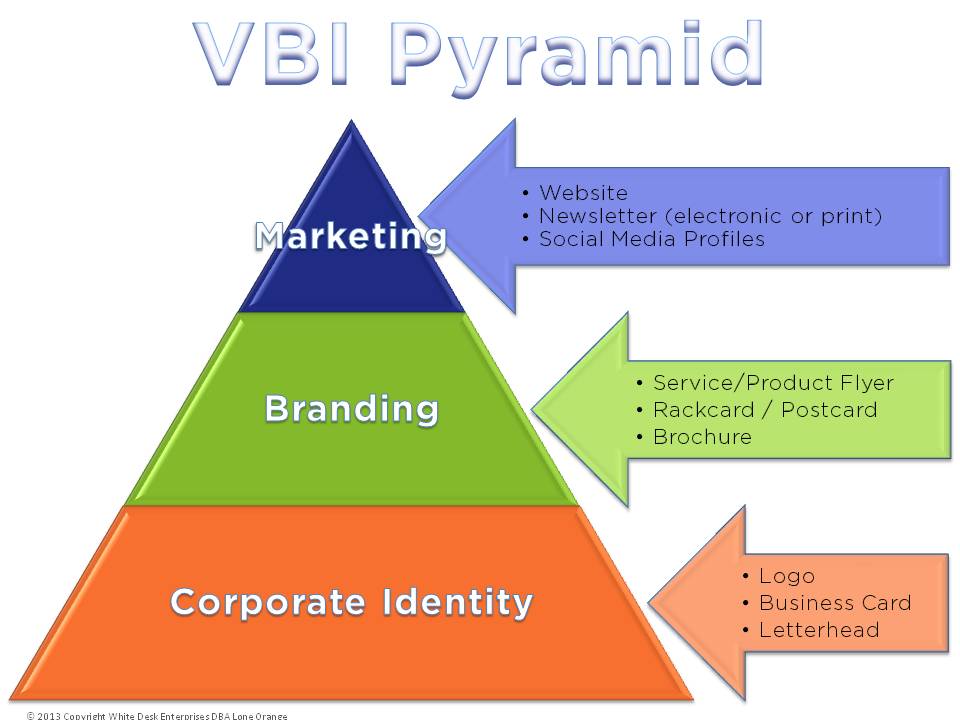When people become aware of the enormous impact of Visual Business Identity (VBI) on their bottom line, they anxiously ask where to begin. It’s overwhelming to think about all the things that people see that represent your business. So the best way to start is to think from the bottom up.

I’ve provided an illustration of the VBI Pyramid with examples of what each section includes, but this is by no means an exhaustive list of VBI components. Each company is unique and therefore the VBI components you’ll need are unique. Here are just a few:
The foundation of any company’s Visual Business Identity is the logo. The key to a good logo, and what many businesses overlook, is that it should succinctly communicate your company’s values, personality and can be rendered in many places and in many sizes. Once you have a logo, your most useful networking tool can be designed. The business card is the simplest way to get in front of people. Rather than shoving every tidbit of information on a little 3″x2″ card, capture the most critical components of your message and encourage them to find you elsewhere (your website, email, social media, etc.) The next, most basic, and probably the most versatile, identity tool is the letterhead. A simple, well designed, electronic letterhead can be used for multiple applications besides just regular correspondence. Use it for handouts, invoices, business forms, reports, etc. Other corporate identity material that you may choose to develop, depending on your needs, are: email signature, printed letterhead/envelope, return address label, note card/stationary, PowerPoint Template, and don’t forget a professional headshot.
Once your corporate identity is in place, start working on your branding material. There are lots of ways to present your services and products. A traditional brochure is always a go-to piece, but also consider a rack card or postcard as a handout. They make easy-to-read leave behinds for those who have indicated interest in learning more about your company. At this point, or in the future, you may want to think about giveaway items on which you can put your logo. If you plan to speak, consider a speaker sheet and/or speaker packet. This stage is also where you want to really think about the verbal component of your message. You may want to think about engaging a copywriter to help compose your key messages and basic sales copy.
By now you should be feeling pretty confident about your VBI. Time to spread the word! Depending on your marketing strategy and efforts, it’s time to make sure you have a strong website in place. The world of websites is ever changing and best practices are being identified, evaluated and changed all the time. My best suggestion would be to find a web designer who is on top of the latest trends and can help you present your company clearly and enticingly so you don’t lose prospects at your homepage. Social media and email marketing are all the rage these days. If you ask 10 marketing experts, you’ll get 10 different opinions about the tools and tactics that you “must” use. Rather, do your homework, find what best matches your company and where you will reach your audience and focus your efforts there.
While the VBI pyramid may make building your VBI easier to think about, it doesn’t mean that it has to be built in a particular order. You may decide that to match your current company needs, you need to simultaneously build corporate identity, branding, and marketing VBI components. That’s just fine. As longast you think it through logically and plan it realistically, you’ll be just fine.
——–
Coming Next Time…
What I Learned from Superheroes About VBI






